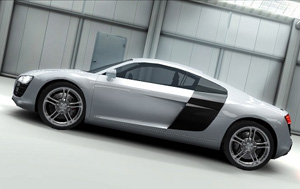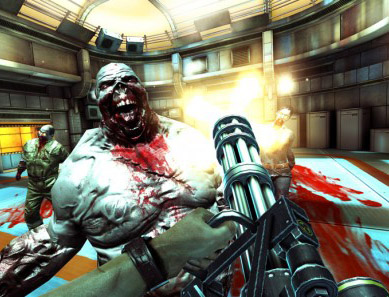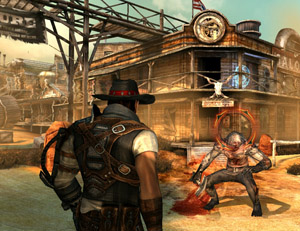iOS Hardware Guide
Hardware models
The following list summarizes iOSApple’s mobile operating system. More info
See in Glossary hardware available in devices of various generations. Current device shaderA small script that contains the mathematical calculations and algorithms for calculating the Color of each pixel rendered, based on the lighting input and the Material configuration. More info
See in Glossary performance can compared on gfxbench which compares different hardware features using benchmarks.
iPhone Models
iPhone 4S
- Screen: 960x640 pixelsThe smallest unit in a computer image. Pixel size depends on your screen resolution. Pixel lighting is calculated at every screen pixel. More info
See in Glossary, LCD at 326 ppi, 800:1 contrast ratio. - Apple A5 Dual-Core 1 GHz ARM Cortex-A9 MPCore CPU
- Dual-Core PowerVR SGX543MP2 GPU
- 512MB of memory
- Rear 8.0 MP infra-red cut-off filter, back-illuminated sensor, 1080p HD videos at 30 fpsSee first person shooter, frames per second.
See in Glossary. - Front 0.3 MP (VGA) with geotagging, tap to focus, and 480p SD video at 30 fps
- GPS support
- Compass Support
 The iPhone 4S, with the A5 chip, is capable of renderingThe process of drawing graphics to the screen (or to a render texture). By default, the main camera in Unity renders its view to the screen. More info
The iPhone 4S, with the A5 chip, is capable of renderingThe process of drawing graphics to the screen (or to a render texture). By default, the main camera in Unity renders its view to the screen. More info
See in Glossary complex shaders throughout the entire screen. Even image effects may be possible. However, optimizing your shaders is still crucial. But if your game isn’t trying to push limits of the device, optimizing scripting and gameplay is probably as much of a waste of time on this generation of devices as it is on PC.
iPhone 5
- Screen: 1136x640 pixels, LCD at 326 ppi.
- Apple A6 Dual-Core 1.3 GHz Apple-designed ARMv7s CPU
- Triple-Core PowerVR SGX543MP3 GPU
- 1GB LPDDR2 of memory
- Rear 8.0 MP infra-red cut-off filter, back-illuminated sensor, 1080p HD videos at 30 fps.
- Front 1.2 MP tagging, tap to focus, and 720p SD video at 30 fps
- GPS support
- Compass Support
iPhone 5S
- Screen: 4" 1136x640 pixels, LCD at 326 ppi.
- Apple A7 Dual-Core 1.3 GHz Apple-designed ARMv8 64-bit CPU
- M7 Motion Coprocessor
- Four Cluster PowerVR G643 GPU
- 1GB LPDDR3 of memory
- Rear 8.0 MP infra-red cut-off filter, back-illuminated sensor, 1080p HD videos at 30 fps.
- Front 1.2 MP tagging, tap to focus, and 720p SD video at 30 fps
- GPS and GLONASS support
- Compass Support
- Three-axis gyro
- Proximity sensor
- Ambient light sensor
- Touch ID Fingerprint identity sensor
iPhone 6(+)
- Screen iPhone6: 4.7" 1134x750 pixels, LCD at 326 ppi.
- Screen iPhone6+: 5.5" 1920x1080 pixels, LCD at 401 ppi.
- Apple A8 Dual-Core 1.4 GHz Apple-designed ARMv8-A 64-bit CPU
- M8 motion coprocessor
- Quad-Core PowerVR GX6450 GPU
- 1GB LPDDR3 of memory
- Rear 8.0 MP infra-red cut-off filter, back-illuminated sensor, 1080p HD videos at 60 fps.
- Front 1.2 MP tagging, tap to focus, and 720p SD video at 30 fps
- GPS and GLONASS support
- Compass Support
- Three-axis gyro
- Proximity sensor
- Ambient light sensor
- Touch ID Fingerprint identity sensor
- NFC
iPhone 6s(+)
- Screen iPhone6: 4.7" 1134x750 pixels, LCD at 326 ppi.
- Screen iPhone6+: 5.5" 1920x1080 pixels, LCD at 401 ppi.
- Apple A9 1.84 GHz Apple-designed ARMv8-A 64-bit CPU
- Embedded M9 motion coprocessor
- Hexa-Core PowerVR GT7600 GPU
- 2GB LPDDR4 of memory
- Rear 12.0 MP phase detection autofocus, dual-LED dual-tone flash, 4K videos at 30 fps.
- Front 5.0 MP face detection, HDRhigh dymanic range
See in Glossary, panorama and 1080p HD video at 30 fps - A-GPS and GLONASS support
- Compass Support
- Three-axis gyro
- Proximity sensor
- Ambient light sensor
- Touch ID Fingerprint identity sensor
- NFC
iPhone 7(+)
- Screen iPhone6: 4.7" 1134x750 pixels, LCD at 326 ppi.
- Screen iPhone6+: 5.5" 1920x1080 pixels, LCD at 401 ppi.
- Apple A10 Fusion 2.34 GHz Quad-core (2 Hurricane + 2 Zephyr)
- M10 motion coprocessor
- Hexa-Core PowerVR Series7XT Plus
- iPhone7: 2GB LPDDR4 of memory
- iPhone7+: 3GB LPDDR4 of memory
- Rear 12.0 MP phase detection autofocus, dual-LED dual-tone flash, 4K videos at 30 fps.
- iPhone7+ also has a second 12.0 MP cameraA component which creates an image of a particular viewpoint in your scene. The output is either drawn to the screen or captured as a texture. More info
See in Glossary. - Front 7.0 MP face detection, HDR, panorama and 1080p HD video at 30 fps
- A-GPS and GLONASS support
- Compass Support
- Three-axis gyro
- Proximity sensor
- Ambient light sensor
- Touch ID Fingerprint identity sensor
- NFC
iPhone 8(+)
- Screen iPhone6: 4.7" 1134x750 pixels, LCD at 326 ppi.
- Screen iPhone6+: 5.5" 1920x1080 pixels, LCD at 401 ppi.
- Apple A11 Bionic 2.39 GHz Hexa-core (2 Monsoon + 4 Mistral) with Neural Engine
- M11 motion coprocessor
- iPhone8: 2GB LPDDR4 of memory
- iPhone8+: 3GB LPDDR4 of memory
- Rear 12.0 MP phase detection autofocus, dual-LED dual-tone flash, 4K videos at 60 fps.
- iPhone8+ also has a second 12.0 MP camera.
- Front 7.0 MP face detection, HDR, panorama and 1080p HD video at 30 fps
- A-GPS and GLONASS support
- Compass Support
- Three-axis gyro
- Proximity sensor
- Ambient light sensor
- Touch ID Fingerprint identity sensor
- NFC
- Wireless charging supported
iPhone X
- Screen: 5.8" 1125x2436 pixels, OLED at 458 ppi.
- Apple A11 Bionic 2.39 GHz Hexa-core (2 Monsoon + 4 Mistral) with Neural Engine
- M11 motion coprocessor
- 3 GB LPDDR4 of memory
- Rear Dual 12.0 MP phase detection autofocus, dual-LED dual-tone flash, 4K videos at 60 fps.
- Front 7.0 MP face detection, HDR, panorama and 1080p HD video at 30 fps
- A-GPS and GLONASS support
- Compass Support
- Three-axis gyro
- Proximity sensor
- Ambient light sensor
- Touch ID Fingerprint identity sensor
- NFC
- Wireless charging supported
iPod Touch Models
iPod Touch 5th generation
- Screen: 1136x640 pixels, LCD at 326 ppi
- Apple A5 Dual-Core 1GHz (underclocked to 800MHz) ARM Cortex-A9 MPCore CPU
- Dual-Core PowerVR SGX543MP2 GPU
- 512MB of memory
- Rear 5.0 MP backside illuminated CMOS image sensor with 1080p HD video at 30 fps, face detection and video stabilization.
- Front 1.2 MP with geotagging, tap to focus, and 720p HD video at 30 fps
iPad Models
iPad 2
- Screen: 1024x768 pixels, LCD at 132 ppi, LED-backlit.
- Apple A5 Dual-Core 1 GHz ARM Cortex-A9 MPCore CPU
- Dual-Core PowerVR SGX543MP2 GPU
- 512MB DDR2 Ram
- GPS support
- Accelerometer, Three-axis Gyro, Proximity Sensor, Ambient Light Sensor, Magnetometer
- Wifi + Bluetooth 2.1 + (3G Cellular HSDPA, 2G cellular EDGE on the 3G version)
- Mechanical keys: Home, sleep, function switch, volume.
 iPad2: the A5 can do full screen bumpmapping, assuming the shader is simple enough. However, it is likely that your game will perform best with bumpmapping only on crucial objects. Full screen image effects still out of reach. Scripting optimization less important.
iPad2: the A5 can do full screen bumpmapping, assuming the shader is simple enough. However, it is likely that your game will perform best with bumpmapping only on crucial objects. Full screen image effects still out of reach. Scripting optimization less important.
iPad (3rd generation)
- Screen: 2048x1536 pixels, LCD at 264 ppi, LED-backlit.
- Apple A5X
- Dual-Core 1 GHz ARM Cortex-A9 MPCore CPU
- Quad-Core PowerVR SGX543MP4 GPU
- 1GB LPDDR2 Ram
- GPS and GLONASS support
- Accelerometer, Three-axis Gyro, Proximity Sensor, Ambient Light Sensor, Magnetometer
- Wifi + Bluetooth 4.0 + (LTE, 3G Cellular HSDPA, 2G cellular EDGE on the 3G version)
- Mechanical keys: Home, sleep, function switch, volume.
 The iPad 3 has been shown to be capable of render-to-texture effects such as reflective water and fullscreen image effects. However, optimized shaders are still crucial. But if your game isn’t trying to push limits of the device, optimizing scripting and gameplay is probably as much of a waste of time on this generation of devices as it is on PC.
The iPad 3 has been shown to be capable of render-to-texture effects such as reflective water and fullscreen image effects. However, optimized shaders are still crucial. But if your game isn’t trying to push limits of the device, optimizing scripting and gameplay is probably as much of a waste of time on this generation of devices as it is on PC.
iPad (4th generation)
- Screen: 2048x1536 pixels, LCD at 264 ppi, LED-backlit.
- Apple A6X Dual-Core 1.4 GHz Apple Swift
- Quad-Core PowerVR SGX554MP4 GPU
- 1GB LPDDR2 Ram
- GPS and GLONASS support
- Accelerometer, Three-axis Gyro, Proximity Sensor, Ambient Light Sensor, Magnetometer
- Wifi + Bluetooth 4.0 + (LTE, 3G Cellular HSDPA, 2G cellular EDGE on the 3G version)
- Mechanical keys: Home, sleep, function switch, volume.
iPad (5th generation)
- Screen: 2048x1536 pixels, LCD at 264 ppi, LED-backlit.
- Apple A9 1.85 GHz dual-core 64-bit ARMv8-A
- PowerVR 7XT GT7600
- M9 Motion Coprocessor
- 2GB LPDDR4 Ram
- A-GPS and GLONASS support
- Accelerometer, Three-axis Gyro, Proximity Sensor, Ambient Light Sensor, Magnetometer
- Wifi + Bluetooth 4.2 + (LTE Advanced, UMTS/HSPA/HSPA+/DC-HSDPA, GSM/EDGE )
- Mechanical keys: Home, sleep, function switch, volume.
iPad (6th generation)
- Screen: 2048x1536 pixels, LCD at 264 ppi, LED-backlit.
- Apple A10 Fusion 2.34 GHz Quad-core
- PowerVR 7XT GT7600
- M10 Motion Coprocessor
- 2GB LPDDR4 Ram
- A-GPS and GLONASS support
- Apple Pencil support
- Accelerometer, Three-axis Gyro, Proximity Sensor, Ambient Light Sensor, Magnetometer
- Wifi + Bluetooth 4.2 + (LTE Advanced, UMTS/HSPA/HSPA+/DC-HSDPA, GSM/EDGE )
- Mechanical keys: Home, sleep, function switch, volume.
iPad Air
- Screen: 2048x1536 pixels, LCD at 264 ppi, LED-backlit.
- Apple A7 Dual-Core 1.4 GHz Apple Cyclone
- Quad-Core PowerVR G6430 GPU
- M7 Motion Coprocessor
- 1GB LPDDR3 Ram
- GPS and GLONASS support
- Accelerometer, Three-axis Gyro, Proximity Sensor, Ambient Light Sensor, Magnetometer
- Wifi + Bluetooth 4.0 + (LTE, 3G Cellular HSDPA, 2G cellular EDGE on the 3G version)
- Mechanical keys: Home, sleep, function switch, volume.
iPad Air 2
- Screen: 2048x1536 pixels, LCD at 264 ppi, LED-backlit.
- Apple A8X 1.5 GHz triple-core
- Hex-Core PowerVR GX6650 GPU
- M8 Motion Coprocessor
- 2GB LPDDR3 Ram
- GPS and GLONASS support
- Accelerometer, Three-axis Gyro, Proximity Sensor, Ambient Light Sensor, Magnetometer
- Wifi + Bluetooth 4.0 + (LTE, 3G Cellular HSDPA, 2G cellular EDGE on the 3G version)
- Mechanical keys: Home, sleep, function switch, volume.
iPad Mini
- Screen: 1024x768 pixels, LCD at 163 ppi, LED-backlit.
- Apple A5 Dual-Core 1 GHz ARM Cortex-A9
- Dual-Core PowerVR SGX543MP2 GPU
- 512MB DDR2 Ram
- GPS and GLONASS support
- Accelerometer, Three-axis Gyro, Proximity Sensor, Ambient Light Sensor, Magnetometer
- Wifi + Bluetooth 4.0 + (LTE, 3G Cellular HSDPA, 2G cellular EDGE on the 3G version)
- Mechanical keys: Home, sleep, function switch, volume.
iPad Mini 2
- Screen: 2048x1536 pixels, LCD at 326 ppi, LED-backlit.
- Apple A7 Dual-Core 1.3 GHz Apple Cyclone
- Quad-Core PowerVR G6430 GPU
- 1GB LPDDR3 Ram
- GPS and GLONASS support
- Accelerometer, Three-axis Gyro, Proximity Sensor, Ambient Light Sensor, Magnetometer
- Wifi + Bluetooth 4.0 + (LTE, 3G Cellular HSDPA, 2G cellular EDGE on the 3G version)
- Mechanical keys: Home, sleep, function switch, volume.
iPad Mini 3
- Screen: 2048x1536 pixels, LCD at 326 ppi, LED-backlit.
- Apple A7 Dual-Core 1.3 GHz Apple Cyclone
- Quad-Core PowerVR G6430 GPU
- 1GB LPDDR3 Ram
- GPS and GLONASS support
- Accelerometer, Three-axis Gyro, Proximity Sensor, Ambient Light Sensor, Magnetometer
- Wifi + Bluetooth 4.0 + (LTE, 3G Cellular HSDPA, 2G cellular EDGE on the 3G version)
- Mechanical keys: Home, sleep, function switch, volume.
iPad Pro (1st Generation)
- Screen 9.7″: 20148x1536 pixels, LCD at 264 ppi, LED-backlit.
- Screen 12.9″: 2732x2048 pixels, LCD at 264 ppi, LED-backlit.
- Apple A9X 64-bit ARMv8-A dual-core (9.7″ model is slightly underclocked)
- PowerVR 7XT GT7800 (12 Clusters)
- M9 Motion Coprocessor
- 12.9″ Model: 4GB LPDDR4 Ram
- 9.7″ Model: 2GB LPDDR4 Ram
- A-GPS and GLONASS support
- Accelerometer, Three-axis Gyro, Proximity Sensor, Ambient Light Sensor, Magnetometer
- Wifi + Bluetooth 4.2 + (LTE Advanced, UMTS/HSPA/HSPA+/DC-HSDPA, GSM/EDGE )
- Mechanical keys: Home, sleep, function switch, volume.
iPad Pro (2nd Generation)
- Screen 10.5″: 2224x1668 pixels, LCD at 264 ppi, LED-backlit.
- Screen 12.9″: 2732x2048 pixels, LCD at 264 ppi, LED-backlit.
- Apple A10X Fusion 2.38 GHz Hexa-core (3 Hurricane + 3 Zephyr)
- PowerVR 7XT GT7600 Plus (12 Clusters)
- M10 Motion Coprocessor
- 4GB LPDDR4 Ram
- A-GPS and GLONASS support
- ProMotion support
- Accelerometer, Three-axis Gyro, Proximity Sensor, Ambient Light Sensor, Magnetometer
- Wifi + Bluetooth 4.2 + (LTE Advanced, UMTS/HSPA/HSPA+/DC-HSDPA, GSM/EDGE )
- Mechanical keys: Home, sleep, function switch, volume.
Graphics Processing Unit and Hidden Surface Removal
The iPhone/iPad graphics processing unit (GPU) is a Tile-Based Deferred Renderer. In contrast with most GPUs in desktop computers, the iPhone/iPad GPU focuses on minimizing the work required to render an image as early as possible in the processing of a sceneA Scene contains the environments and menus of your game. Think of each unique Scene file as a unique level. In each Scene, you place your environments, obstacles, and decorations, essentially designing and building your game in pieces. More info
See in Glossary. That way, only the visible pixels will consume processing resources.
The GPU’s frame buffer is divided up into tiles and rendering happens tile by tile. First, triangles for the whole frame are gathered and assigned to the tiles. Then, visible fragments of each triangle are chosen. Finally, the selected triangle fragments are passed to the rasterizer (triangle fragments occluded from the camera are rejected at this stage).
In other words, the iPhone/iPad GPU implements a Hidden Surface Removal operation at reduced cost. Such an architecture consumes less memory bandwidth, has lower power consumption and utilizes the texture cache better. Tile-Based Deferred Rendering allows the device to reject occluded fragments before actual rasterizationThe process of generating an image by calculating pixels for each polygon or triangle in all the geometry. This is an alternative to ray tracing.
See in Glossary, which helps to keep overdraw low.
For more information, see also:
- Apple Notes on iPhone/iPad GPU and OpenGL ES
- Apple Performance Advices for OpenGL ES in General
- Apple Performance Advices for OpenGL ES Shaders
Texture compression
iOS devices support these texture compressionA method of storing data that reduces the amount of storage space it requires. See Texture Compression, Animation Compression, Audio Compression, Build Compression.
See in Glossary formats:
PVRTCPowerVR Texture Compression (PVRTC) is a fixed-rate texture format that compresses textures to significantly reduce file sizes without causing a noticable reduction in image quality. More info
See in Glossary provides support for RGB and RGBA (color information plus an alpha channel) texture formatsA file format for handling textures during realtime rendering by 3D graphics hardware, such as a graphics card or mobile device. More info
See in Glossary and can compress a single pixel to two or four bits. The PVRTC format is essential to reduce the memory footprint and to reduce consumption of memory bandwidth, as in the rate at which data can be read from memory, which is usually very limited on mobile devices.ETC(Ericsson Texture Compression) A block-based texture format that compresses textures to significantly reduce file sizes without causing a noticable reduction in image quality. More info
See in Glossary compresses 4x4 pixel blocks into 64-bit quantities, but lacks an alpha channel.ETC2 supports both 1-bit and 8-bit alpha channel compression.
ASTCAdaptive Scalable Texture Compression (ASTC) A block-based texture format that compresses textures to significantly reduce file sizes without cau sing a noticable reduction in image quality. More info
See in Glossary is flexible format that uses pixel block sizes. It’s supported by Metal and OpenGL ES 3.0 graphic APIs.
Note: the DXT texture compression3D Graphics hardware requires Textures to be compressed in specialised formats which are optimized for fast Texture sampling. More info
See in Glossary format on iOS devices is NOT supported.
For detailed texture compression options in iOS, see iOS 2D Texture Overrides.
Vertex Processing Unit
The iPhone/iPad has a dedicated unit responsible for vertex processing which runs calculations in parallel with rasterization. In order to achieve better parallelization, the iPhone/iPad processes vertices one frame ahead of the rasterizer.
Unified Memory Architecture
Both the CPU and GPU on the iPhone/iPad share the same memory. The advantage is that you don’t need to worry about running out of video memory for your textures (unless, of course, you run out of main memory too). The disadvantage is that you share the same memory bandwidth for gameplay and graphics. The more memory bandwidth you dedicate to graphics, the less you will have for gameplay and physics.
Multimedia CoProcessing Unit
The iPhone/iPad main CPU is equipped with a powerful SIMD (Single Instruction, Multiple Data) coprocessor supporting either the VFP or the NEON architecture. The Unity iOS run-time takes advantage of these units for multiple tasks such as calculating skinned meshThe main graphics primitive of Unity. Meshes make up a large part of your 3D worlds. Unity supports triangulated or Quadrangulated polygon meshes. Nurbs, Nurms, Subdiv surfaces must be converted to polygons. More info
See in Glossary transformations, geometry batching, audio processing and other calculation-intensive operations.
- 2018–06–28 Page amended
Did you find this page useful? Please give it a rating: